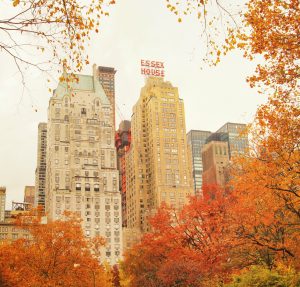
Bulletin #104 - Feb 2017
Busted Again

February 8, 2017
Churchill Bust Returns to the Oval Office
By SIR KIM DARROCH
 On Friday, January 27, Prime Minister Theresa May visited the White House and officially loaned a bust of Sir Winston Churchill to President Donald Trump. The bust has been placed in the Oval Office as a symbol of the strength of the relationship between the United Kingdom and the United States. The presence of a bust of one of the most famous Anglo-Americans in history will be a reminder of a friendship that has endured for generations in both good times and bad.
On Friday, January 27, Prime Minister Theresa May visited the White House and officially loaned a bust of Sir Winston Churchill to President Donald Trump. The bust has been placed in the Oval Office as a symbol of the strength of the relationship between the United Kingdom and the United States. The presence of a bust of one of the most famous Anglo-Americans in history will be a reminder of a friendship that has endured for generations in both good times and bad.
There has been some understandable confusion about this bust because there have in fact been two Churchill busts that have spent time in the White House, and both were made by the same British sculptor, Sir Jacob Epstein (1880–1959).
The first bust to arrive in the White House was a gift from the Wartime Friends of Winston Churchill and accepted by President Lyndon Johnson in 1965. The second bust, owned by the UK Government Art Collection, was loaned by the British Government to President George W. Bush in 2001, while the first bust was being restored. This bust was placed in the Oval Office. At the end of President Bush’s Presidency in 2009, it was returned to the British Ambassador’s Residence, and the first bust—fully restored—was placed just outside President Barack Obama’s private study in the White House Residence.
At the request of President Trump’s team, the British Government has now formally loaned the second bust back, and it has resumed its original place in the Oval Office, while the first bust remains in the private quarters.

2025 International Churchill Conference
It is fitting, perhaps, that there are two busts of Winston Churchill in the White House, where many people had imagined there was only one. During his visits to the US, especially throughout the dark days of the Second World War, the man himself was a constant presence at the White House of President Franklin D. Roosevelt.
On Churchill’s first visit to the White House after the attack on Pearl Harbor, he turned The Rose Suite into a British government headquarters away from home. The Monroe Room became a map room, with charts that tracked the course of the war. Reporting home, Churchill wrote, “We live here as a big family in the greatest intimacy and informality, and I have formed the very highest regard and admiration for the President.”
It was a tense time, full of uncertainty. Through those late nights and warm conversations, the bond between Roosevelt and Churchill was forged, and the future of the special relationship secured. So it is no surprise that, just as the special relationship has endured, so has Churchill’s presence. Over my first year as British Ambassador to the United States, I have found that Churchill—the statesman, the commander, the orator, the wit—is not only held in high regard at home, but equally so here.
As Eleanor Roosevelt noted, “His speeches gave reassurance not only to the people of Great Britain, but to the people of the United States.” And his legacy continues to live on here in the United States.
In 1963, Churchill became the first foreign head of government to be awarded honorary US citizenship. Today, in honour of his contributions, schools, naval ships, and even a mountain bear his name. And his likeness can be spotted in many places around Washington, from the Pentagon to the US Capitol.
Over the years, Churchill also has remained a source of inspiration to many American presidents. President John F. Kennedy cited him when he accepted the Democratic Party’s nomination for President in 1960. After his death, historians found that President Ronald Reagan kept a box of note cards with his favourite quotes by leaders, including Churchill. A favorite, used at the White House Correspondents Dinner in 1986: “Courage is rightly esteemed the first of human qualities because, as has been said, it is the quality which guarantees all others.” And just the other day, President Trump called Churchill a “real ally.”
As we look ahead to the future of the special relationship, we take our cues from the man who helped to forge it. In December 1941, just weeks after the United States entered the Second World War, the great Anglo-American, Winston Churchill, addressed Congress. When both the US and the UK faced such great challenges, he said:
“It is not given to us to peer into the mysteries of the future. Still, I avow my hope and faith, sure and inviolate, that in the days to come the British and American peoples will for their own safety and for the good of all walk together side by side in majesty, in justice, and in peace.”
And so Churchill, back in the Oval Office again, will continue to encourage the UK and the US to forge ever stronger bonds, not just for our shared history, but as much in expectation of our bright future ahead.
Subscribe
WANT MORE?
Get the Churchill Bulletin delivered to your inbox once a month.
Oops! We could not locate your form.
Privacy




